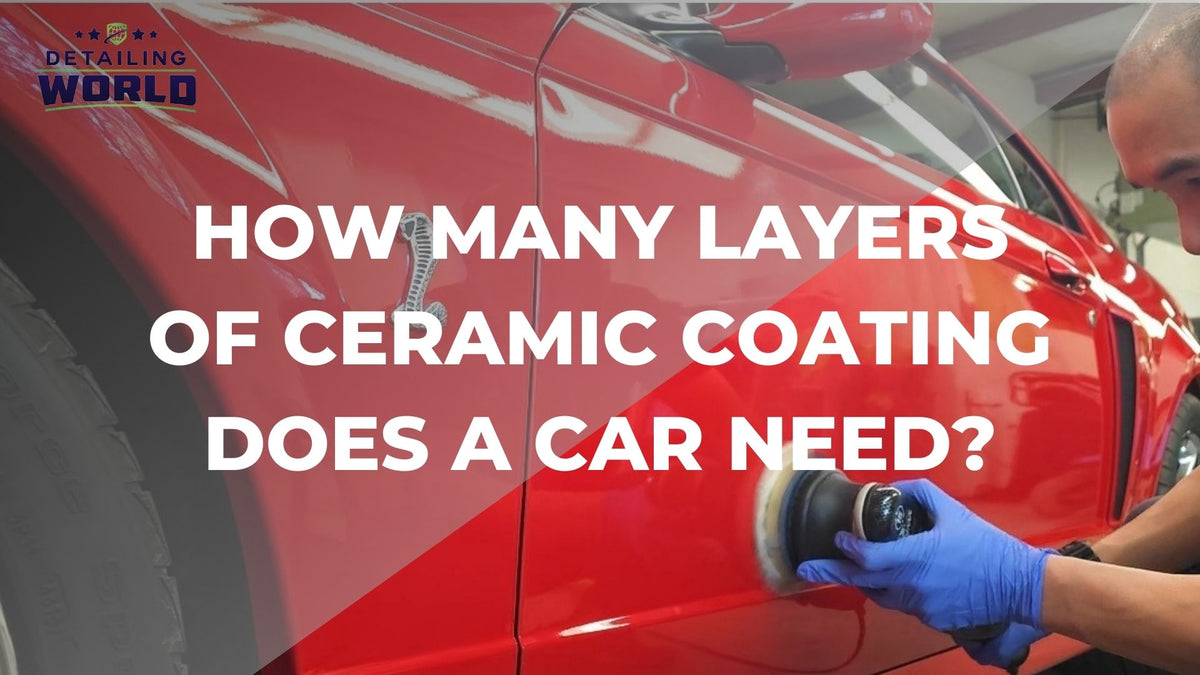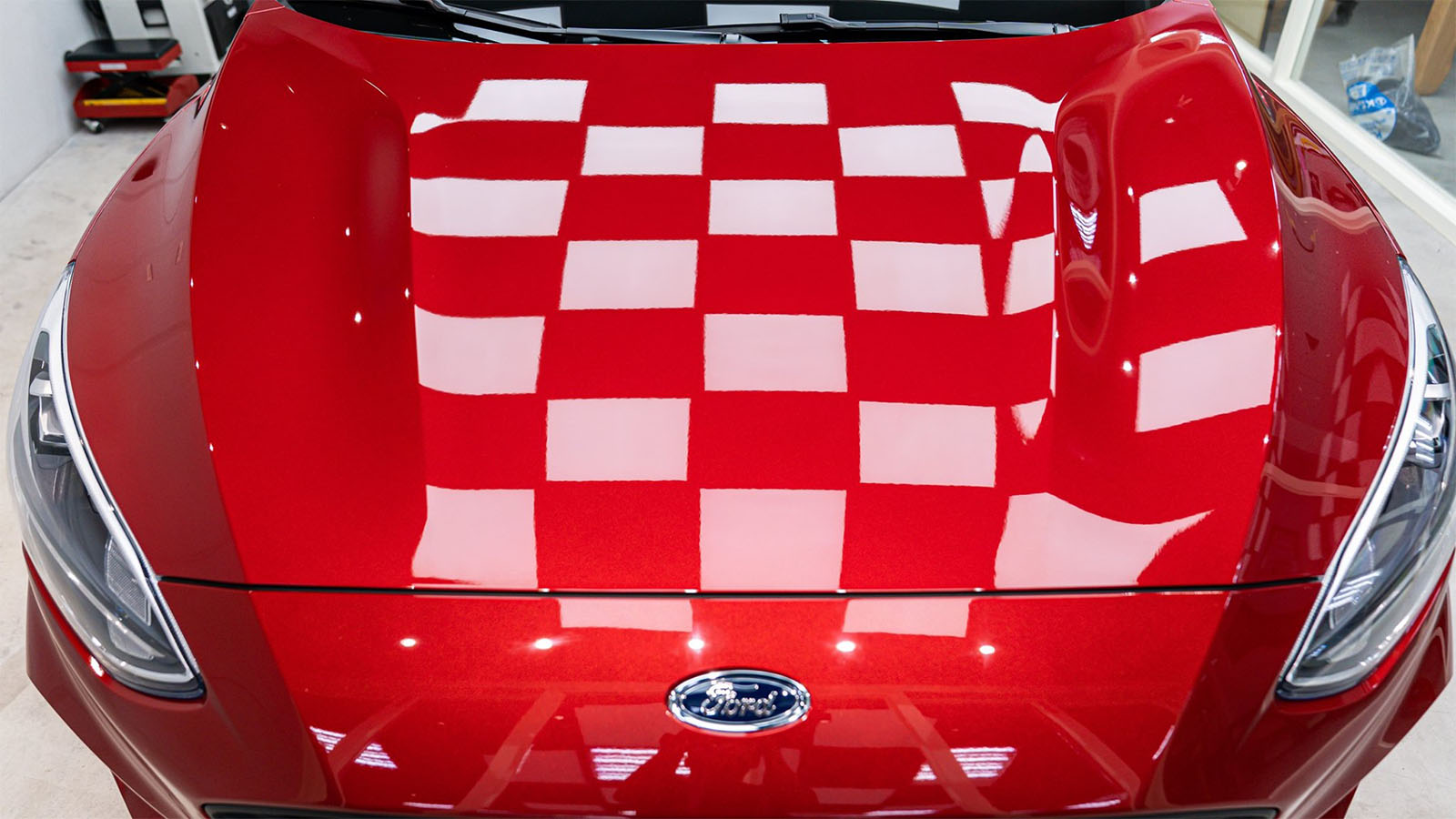Essential Maintenance Tips After Using Ceramic Coating to Your Car
Essential Maintenance Tips After Using Ceramic Coating to Your Car
Blog Article
The Function of Ceramic Finishing in Protecting Your Vehicle's Paint From Environmental Damages
Ceramic finish has emerged as an innovative solution for vehicle proprietors looking for to preserve the integrity of their automobile's outside. As we discover the nuances of ceramic covering, it becomes obvious that the selection to apply this protective measure might substantially influence your automobile's long life and visual.
What Is Ceramic Coating?
Ceramic covering is a sophisticated fluid polymer related to the external surface areas of a vehicle, developed to give a durable layer of protection for the paint. This innovative service forms a chemical bond with the car's factory paint, producing a durable and hydrophobic guard. The layer contains nanoparticles that fill out the tiny flaws in the paint, leading to a smooth surface that improves shine and gloss.
Generally, ceramic coverings are offered in various formulations, enabling various degrees of security and durability. While some products can last for several months, others supply security for numerous years, depending on the thickness of the application and ecological variables. The application procedure requires meticulous prep work, consisting of cleaning, sanitizing, and brightening the car's surface area to make certain ideal adhesion of the coating.

Advantages of Ceramic Finish
One of the key advantages of using a ceramic finish is the exceptional defense it uses to automotive paint. This innovative finishing forms a long lasting layer that shields the lorry's surface area from a variety of ecological dangers, including UV rays, acid rain, bird droppings, and tree sap. By providing this durable defense, ceramic layers considerably decrease the threat of fading and etching, protecting the vehicle's visual appeal gradually.
In addition to protection, ceramic coatings are renowned for their hydrophobic residential or commercial properties, which drive away water and dirt, making it much easier to keep a clean automobile. This self-cleaning result decreases the regularity of cleaning, saving both time and sources. Ceramic finishes boost the deepness of the paint's gloss, resulting in a vibrant and polished look that boosts the total appearance of the automobile.
An additional noteworthy benefit is the durability of ceramic finishes. Unlike typical waxes or sealers that call for frequent reapplication, ceramic coverings can last several years, providing a cost-efficient solution for vehicle owners seeking long-term protection. In general, investing in ceramic finishing results in improved toughness, minimized maintenance, and continual aesthetic charm for vehicle paint.
Exactly How Ceramic Finish Functions
A ceramic finishing operates through a chemical bonding process that develops a safety layer on the automobile's paint surface. This ingenious service utilizes advanced nanotechnology, where tiny bits of silica are suspended in a liquid kind - ceramic coating. Upon application, these bits bond with the factory paint, forming a sturdy and hydrophobic layer that improves the car's surface
The major element of ceramic finishings, silicon Bonuses dioxide (SiO2), adds to the covering's stamina and durability. When treated, the coating changes into a tough, glass-like surface that shields the paint from ecological pollutants such as dust, UV rays, bird droppings, and tree sap. This molecular bond leads to a surface that is not just immune Learn More to scratches yet likewise easier to clean up, as dirt and gunk are less most likely to adhere.
In addition, the hydrophobic properties of ceramic coverings create water to bead and slide off, reducing the opportunities of water spots and mineral down payments. This protective obstacle effectively extends the life of the paint and maintains the automobile's visual appeal, using car owners a long-lasting solution for paint protection.
Application Process of Ceramic Coating
When thinking about the application of ceramic finish, preparation is crucial to attaining optimal outcomes. Any type of why not look here flaws or scratches ought to be dealt with at this phase, as the covering will bond with the surface area below.

Ceramic finish is after that applied in little sections, commonly making use of an applicator pad. It is crucial to operate in also strokes, making certain consistent protection. The finishing ought to be allowed to cure for a defined time, which can differ depending upon the product used. After the initial application, a premium microfiber towel is used to buff the surface area, improving gloss and guaranteeing a smooth finish. Ultimately, the automobile must be left to heal in a regulated atmosphere to allow the coating to totally bond with the paint.
Long-Term Maintenance and Treatment
Achieving an effective ceramic covering application establishes the foundation for long-lasting security, yet correct maintenance is important to preserving its advantages. Routine washing is crucial; using a pH-neutral vehicle hair shampoo will assist maintain the finish's integrity without triggering damage. Prevent automated automobile cleans that usage rough products, as they can endanger the coating's surface.

Furthermore, applying a ceramic covering upkeep spray can enhance the existing layer, providing an extra boost in security and shine. It's recommended to perform this every three to 6 months, relying on environmental exposure.
Lastly, parking in shaded locations or making use of auto covers can avoid long term exposure to damaging UV rays and environmental pollutants, additionally prolonging the life of your ceramic layer. By adhering to these maintenance practices, you can guarantee your vehicle's finish continues to be safeguarded and visually appealing for several years to come.
Verdict
In recap, ceramic finishing functions as an important safety procedure for vehicle paint, properly shielding vehicles from a variety of environmental risks. Its ability to produce a durable hydrophobic obstacle not only improves visual allure however likewise considerably decreases the regularity and strength of maintenance called for. The durable nature of this innovative polymer underscores its worth in maintaining vehicle honesty and look, eventually adding to a more aesthetically enticing and long lasting automotive surface.
Ceramic finish is an advanced liquid polymer applied to the outside surface areas of a vehicle, designed to give a durable layer of security for the paint. Ceramic finishes enhance the depth of the paint's gloss, resulting in a polished and lively look that elevates the general look of the vehicle.
A ceramic layer operates through a chemical bonding process that produces a protective layer on the automobile's paint surface area.The primary element of ceramic layers, silicon dioxide (SiO2), contributes to the coating's strength and strength.In recap, ceramic covering offers as an essential protective measure for automobile paint, effectively protecting vehicles from an array of environmental risks.
Report this page